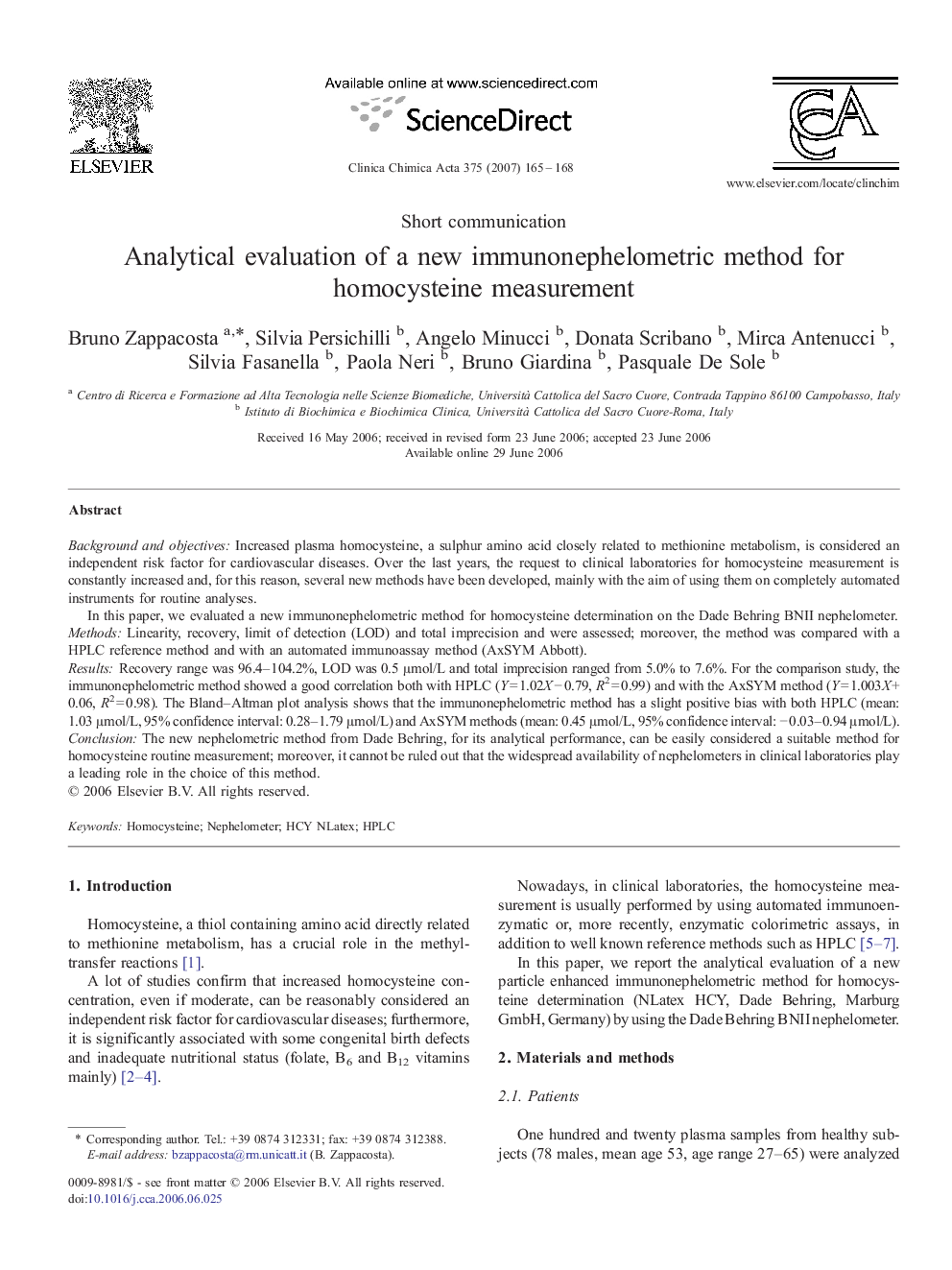| Article ID | Journal | Published Year | Pages | File Type |
|---|---|---|---|---|
| 1967923 | Clinica Chimica Acta | 2007 | 4 Pages |
Background and objectivesIncreased plasma homocysteine, a sulphur amino acid closely related to methionine metabolism, is considered an independent risk factor for cardiovascular diseases. Over the last years, the request to clinical laboratories for homocysteine measurement is constantly increased and, for this reason, several new methods have been developed, mainly with the aim of using them on completely automated instruments for routine analyses.In this paper, we evaluated a new immunonephelometric method for homocysteine determination on the Dade Behring BNII nephelometer.MethodsLinearity, recovery, limit of detection (LOD) and total imprecision and were assessed; moreover, the method was compared with a HPLC reference method and with an automated immunoassay method (AxSYM Abbott).ResultsRecovery range was 96.4–104.2%, LOD was 0.5 μmol/L and total imprecision ranged from 5.0% to 7.6%. For the comparison study, the immunonephelometric method showed a good correlation both with HPLC (Y = 1.02X − 0.79, R2 = 0.99) and with the AxSYM method (Y = 1.003X + 0.06, R2 = 0.98). The Bland–Altman plot analysis shows that the immunonephelometric method has a slight positive bias with both HPLC (mean: 1.03 μmol/L, 95% confidence interval: 0.28–1.79 μmol/L) and AxSYM methods (mean: 0.45 μmol/L, 95% confidence interval: − 0.03–0.94 μmol/L).ConclusionThe new nephelometric method from Dade Behring, for its analytical performance, can be easily considered a suitable method for homocysteine routine measurement; moreover, it cannot be ruled out that the widespread availability of nephelometers in clinical laboratories play a leading role in the choice of this method.
